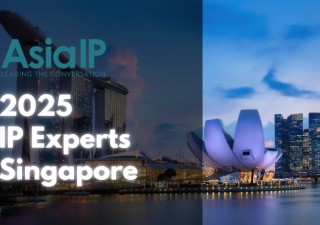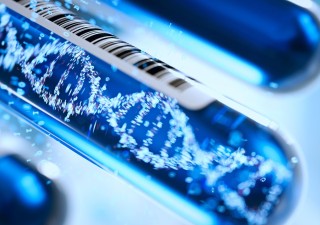Disclosures During Patent Litigation: To Request or Not To Request?
18 November 2014

In Syntroleum v. Neste Oil Singapore, the Singapore High Court dismissed two sets of applications filed by the defendant for the disclosure of three categories of documents by the plaintiff in respect of Singapore Patent 172045 (the 045 patent), Singapore Patent 169053 (the 053 patent) and the United States Patent 5,705,722 (the US 722 patent).
The applications stem from two separate suits (with substantially similar issues) instituted by the plaintiff against the defendant for infringement of its petrochemical patents. The defendant denied any infringement and counterclaimed that the patents were invalid by reason, inter alia, of the defendant’s prior sale of its NExBTL product and for insufficiency of disclosure.
In the course of proceedings, the defendant sought the disclosure of three categories of documents; namely, (a) the inventor’s notes in respect of the 045 patent and the 053 patent; (b) the experimentation results obtained by the plaintiff in tests that it performed on the defendant’s NExBTL product; and (c) the experimentation results obtained by the plaintiff in its tests conducted in accordance to the instructions set forth in the US 722 patent.
It is important to note that Order 87A of the Singapore Rules of Court (the ROC) governs proceedings in the Singapore High Court in respect of patents registered under the Singapore Patents Act. Order 87A, Rule 5(2) (3) of the ROC limits the disclosure of documents relating to any ground on which the validity of a patent is put in issue to a period of four years on either side of the earliest claimed priority date.
With regard to the disclosure of inventor’s notes, the defendant argued that they were relevant as evidence of the state of the art at the time of invention and whether steps taken by the inventor were obvious to the ordinary man skilled in the art. Further, the defendant also sought to adduce the inventor’s notes as secondary evidence and to admit the same as evidence of the inventor’s subjective views.
As regards the disclosure of experimentation results obtained by the plaintiff from tests conducted on the defendant’s NExBTL product and the US 722 patent, the defendant contended that the foregoing would show that the plaintiff’s patents were anticipated by the prior art.
In response, the plaintiff raised objections on the ground that the subjective knowledge and intentions of inventors are no longer relevant and should be excluded. Further, the plaintiff submitted that the inventor’s notes and the experimentation results were private documents and do not form part of the publicly available state of the art. Additionally, the plaintiff maintained the position that it had never carried out any such tests on the defendant’s NExBTL product and consequently, there was nothing to disclose.
The court posited that inventor’s notes are discoverable. However, the court added that inventor’s notes should not be discoverable during general discovery unless the issues for which they are required have been especially particularized through pleadings (e.g., the particulars of objections) or through a list of issues. Indeed, as inventor’s notes are secondary evidence pertinent to the issue of obviousness which is an objective analysis, the primary evidence relied upon should be documents that are publicly available. The court ruled that publicly available documents would suffice and accordingly, recourse should not be made to notes by a private inventor unless it is necessary to do so.
Applying the above to the present case, the court found the Particulars of Objections (Amendment No. 2) by the defendant to be devoid of particulars.
The court explained that where the particulars of objections were sufficiently particularized to enable a proper consideration of not just the abstract grounds of challenge but the detailed issues, as well as a discussion of how the inventor’s notes are intended to be used after disclosure, it would not be inconceivable to direct the disclosure of the inventor’s notes as part of general discovery. In this vein, the court underscored the following situations where disclosure of the inventor’s notes could be necessary for the fair disposal of the matter or for minimizing the incurrence of unnecessary costs; namely, (a) where the inventor is called as a witness; (b) whenever specific issues are particularized; and (c) after the exchange of expert reports or the conduct of experiments.
With regard to the disclosure of experimentation results obtained from tests conducted on the defendant’s NExBTL product, it emerged during the course of submissions by parties that the defendant was after the results obtained from tests conducted by the plaintiff on the defendant’s Swedish Patent No. 9700149. Hence, the court dismissed the same.
As to the disclosure of experimentation results obtained by the plaintiff, the court also dismissed the same as it found that the US 722 patent was not cited as prior art. Accordingly, the plaintiff cannot be expected to know that they would be relied on.
This case shows the importance of ensuring that all pleadings are sufficiently particularized to substantiate any and all requests prayed for by parties. Adherence to civil procedure rules is as important as substantive law. As stated by Lord Mansfield in Robinson v. Raley in 1756:
“[t]he substantial rules of pleading are founded in strong sense, and in the soundest and closest logic; and so appear, when well understood and explained : Though, by being misunderstood and misapplied, they are often made use of as instruments of chicane”.

1 Coleman Street
#07-09 The Adelphi
Singapore 179803
T: +65 6336 4679
F: +65 6336 4393
E: lawyers@mirandahlaw.com
W: www.mirandahlaw.com






